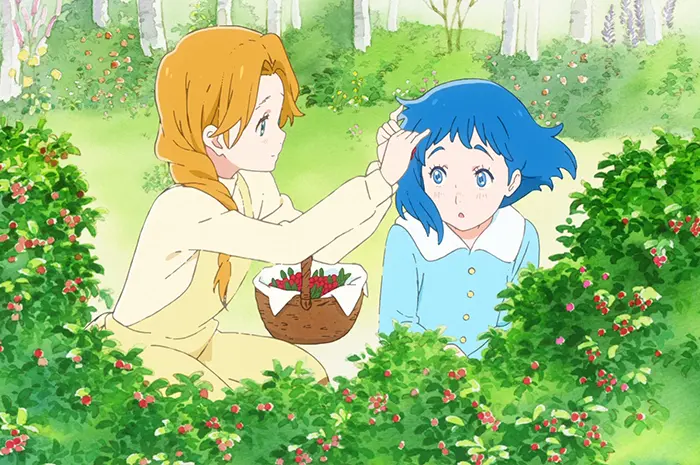Naoko Yamada Spotlight: Liz and the Blue Bird
Special edition of the Anime Spotlight series in the backdrop of upcoming release of "The Colors Within" movie!
This is part four of a five part series of retrospectives looking at anime industry legend Naoko Yamada's directorial career, in the lead-up to the Indian theatrical release of her latest work The Colours Within. One will be posted everyday; check back tomorrow for part five!
First disjoint, then joint
I remember that feeling of close friendships drifting apart as I graduated from school, grew older, and embarked on my career. The nostalgia of shared experiences fading into memory. Liz and the Blue Bird perfectly captures this sentiment, weaving a tale of two friends navigating the complexities of adolescence.
This is a coming-of-age story that explores friendship, growth, and the bittersweet nature of farewell. Mizore and Nozomi, familiar to fans of Hibike! Euphonium, are brought to life with depth and nuance in this film. They are best friends and members of their school's concert band, playing the oboe and flute respectively. As they prepare for their final year, they are tasked with playing the lead instruments in the third movement of “Liz and the Blue Bird”, a musical piece inspired by a German fairy tale.

The story unfolds through the lens of the fairy tale, where Liz, a kind and introverted girl, meets a blue bird who transforms into a beautiful woman. They fall in love, but the blue bird must eventually return to her own world, leaving Liz heartbroken. Mizore identifies with Liz, while Nozomi embodies the free-spirited blue bird.

As the girls delve deeper into the music, they begin to see parallels between the fairy tale and their own friendship. Mizore, fearing their impending separation, struggles with her feelings for Nozomi, while Nozomi, more outgoing and popular, seemingly takes their friendship for granted. Their disjointed performance in practice sessions reflects their internal struggles and growing distance.
Yamada's signature style, highlighted by delicate linework and expressive character designs, reaches new heights in this film. The animation is fluid and graceful, capturing the subtle nuances of human emotion and the delicate movements of the characters, with breathtaking precision. The use of color is particularly striking, with soft pastels dominating the color palette — notably different from its parent story, Hibike! Euphonium — creating a sense of nostalgia and melancholy.
The direction is masterful — the narratives of the two high-school girls and the fairy-tale characters are expertly interwoven. The film's pacing allows the audience to savor every moment. The music, composed by Kensuke Ushio, is equally impressive, and complements the visuals of the film — one does not lead the other.

Through introspection and honest conversations, Mizore and Nozomi realize that their understanding of the fairy tale was flawed. They come to understand that love and friendship can coexist with the inevitability of change and separation. They gradually accept that their paths may diverge after graduation, but the bond they share will remain.
Through beautiful animation and a poignant soundtrack, Liz and the Blue Bird captures the nature of adolescence — the complexities of friendship, the challenges of growing up, and the courage to let go.
— Aravind
Japanese Name: リズと青い鳥 (Liz to Aoi Tori)
Length: 90 minutes
Genre(s): Drama, Music
Year: 2018
Studio: Kyoto Animation
Sequel to: Sound! Euphonium 2 (13 episodes, 2016)
Adapted from: Sound! Euphonium novel series, by Ayano Takeda
Cinematography: Kazuya Takao
Screenplay: Reiko Yoshida
Music: Kensuke Ushio
Director: Naoko Yamada
All content on this website is protected by copyright and may not be copied, distributed, or reproduced in any form without the express written consent from team@bac.moe.